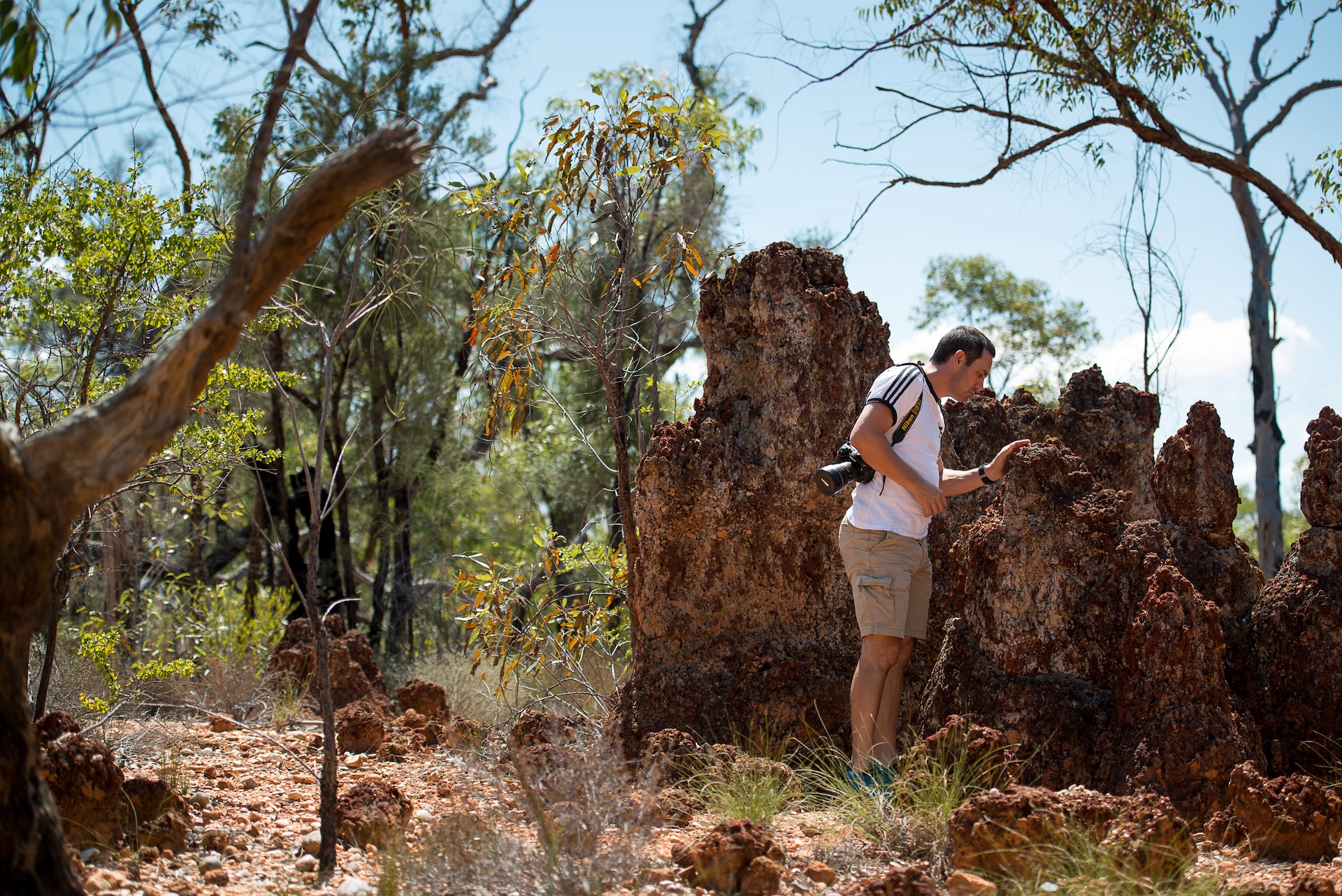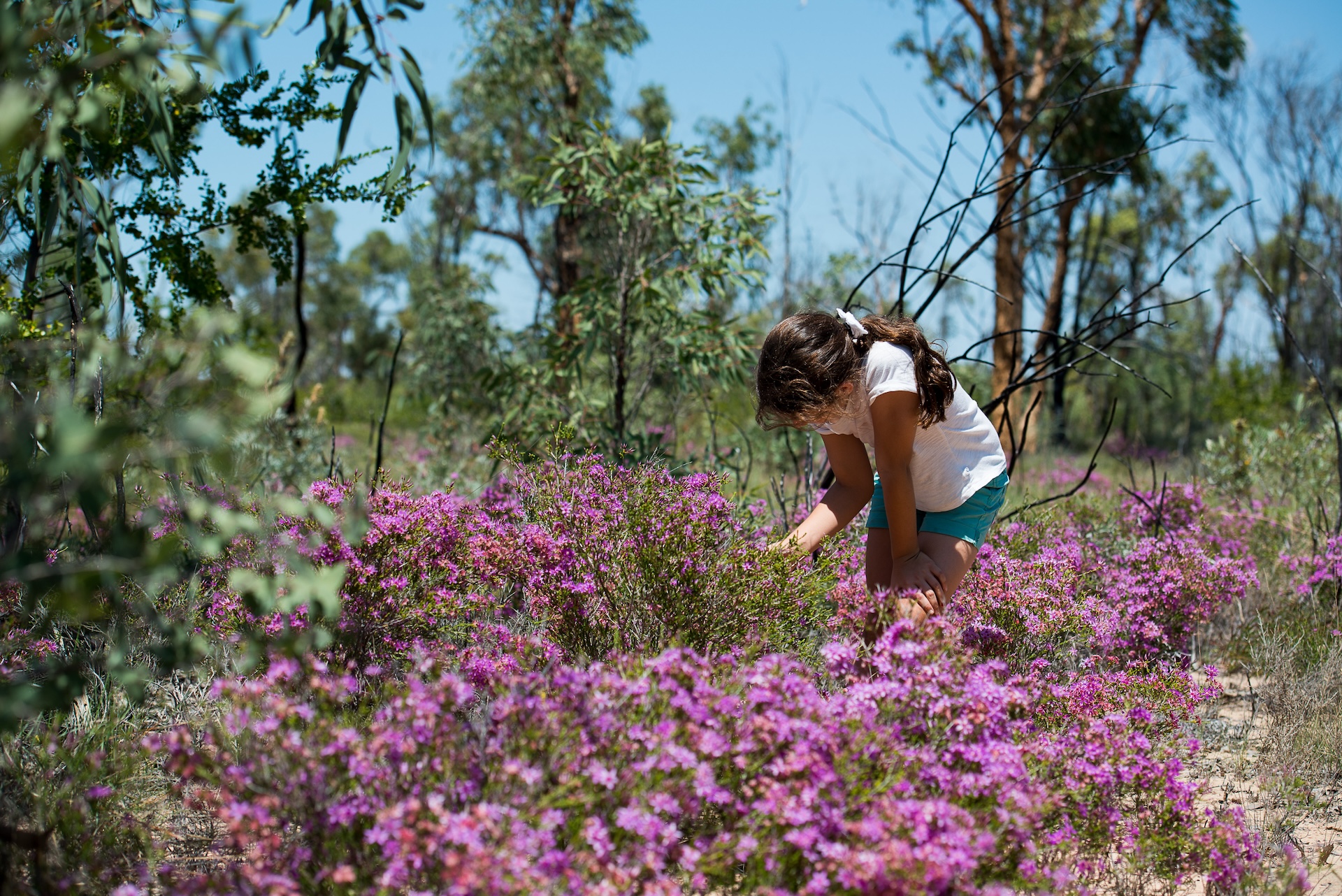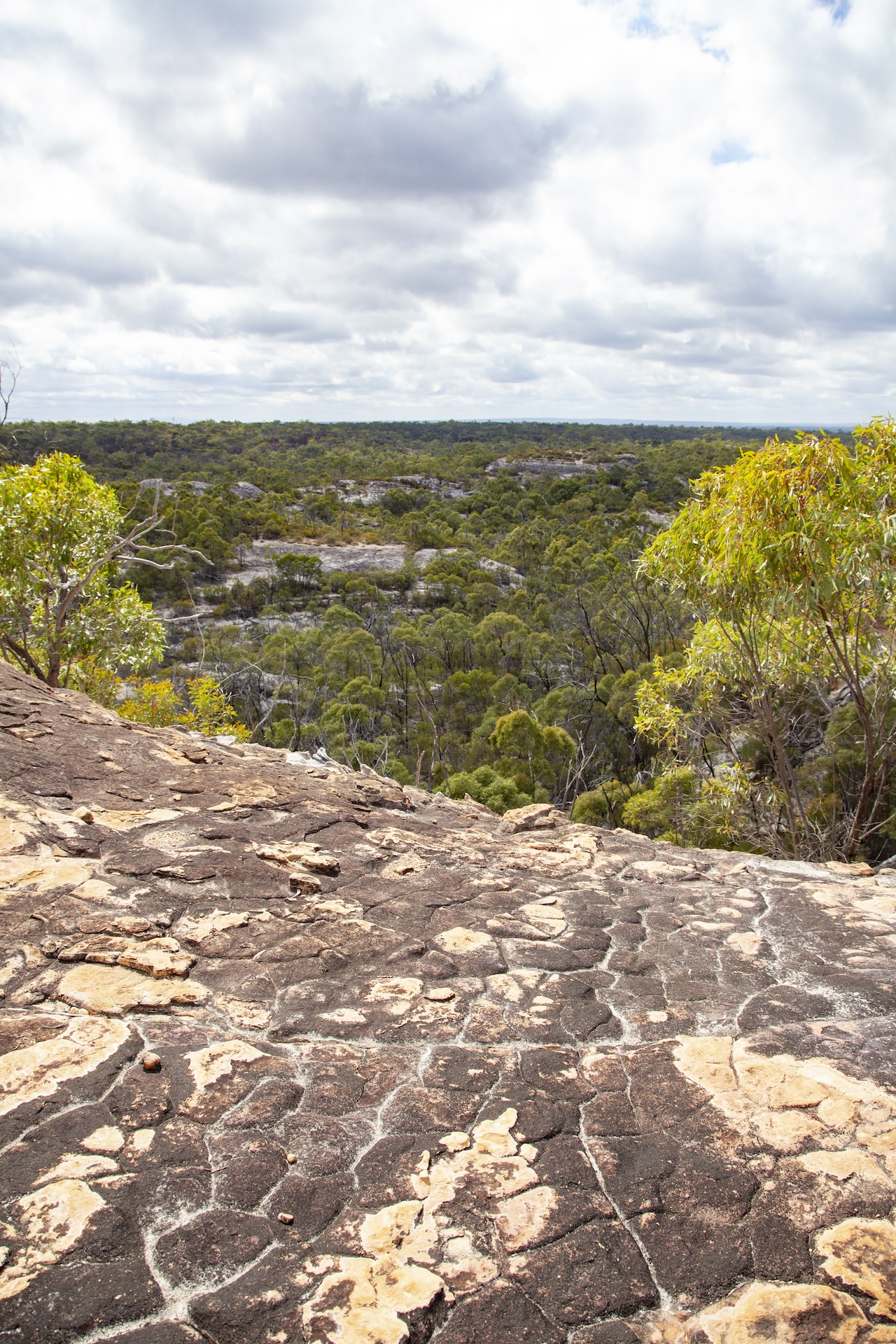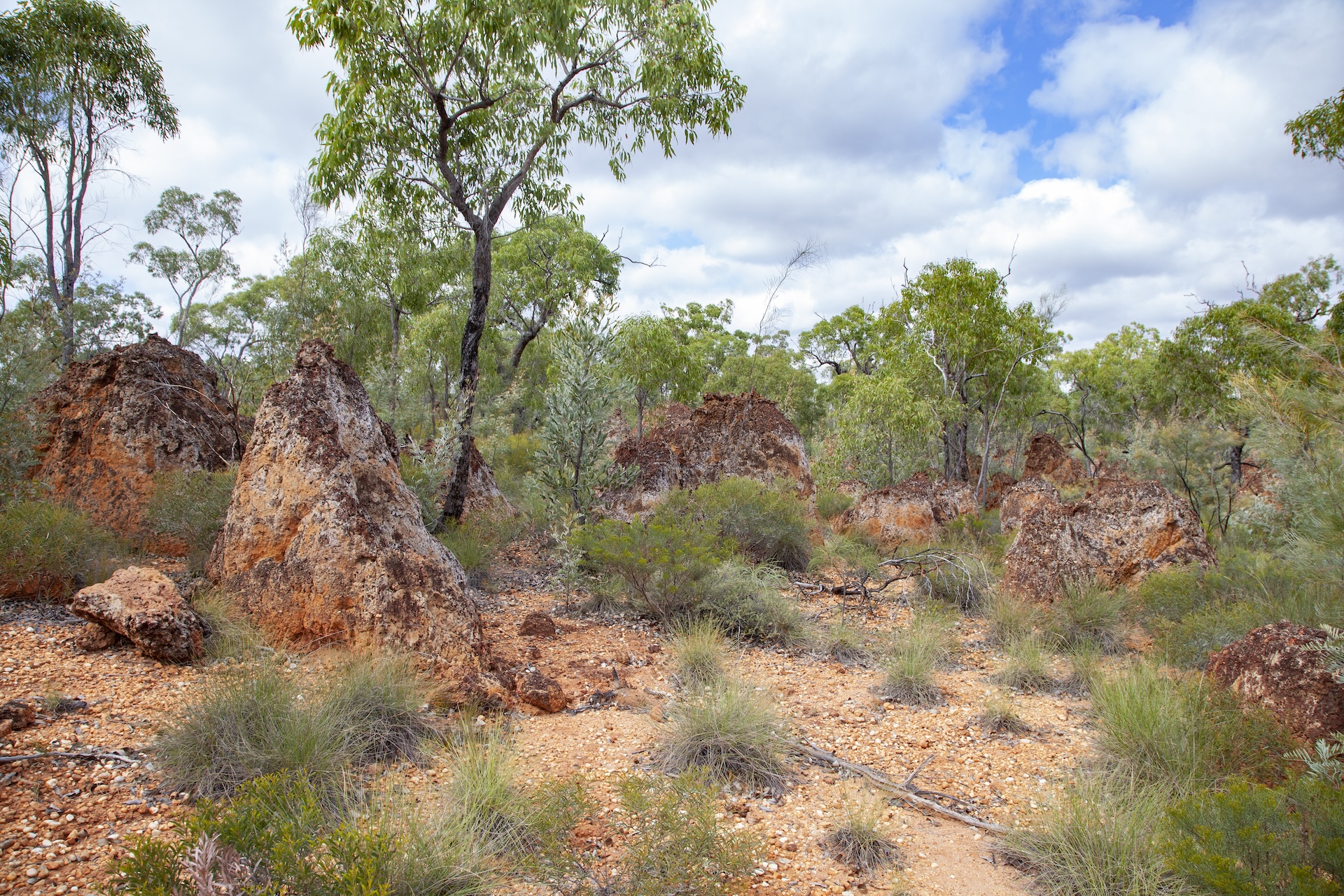As the summer heat begins to wane and the cool breezes of autumn sweep across Queensland’s Outback, there’s no better time to explore the natural wonders that surround us. Just an 80-kilometre drive northeast of Hughenden lies the White Mountains National Park, a sanctuary of diverse landscapes and rich biodiversity waiting to be discovered.

A Mosaic of Ecosystems
White Mountains National Park is a testament to nature’s artistry, encompassing 14 distinct ecosystems within the Desert Uplands bioregion. From the striking white sandstone bluffs and deep gorges to the expansive woodlands and heathlands, the park offers a visual feast for nature enthusiasts.
Sandstone Bluffs and Gorges
The park’s namesake white sandstone formations have been sculpted over millennia, creating dramatic cliffs and winding gorges. These geological wonders not only provide breathtaking vistas but also serve as habitats for specialised flora and fauna.
Lancewood Forests and Woodlands
Dominated by the hardy lancewood trees, these areas offer a stark contrast to the sandy expanses. The dense canopy provides shelter for various bird species and mammals, creating a thriving ecosystem.
Heathlands and Spinifex Grasslands
These open landscapes burst into colour during the flowering season, showcasing a variety of wildflowers. The resilient spinifex grasses also play a crucial role in preventing soil erosion and supporting ground-dwelling creatures.
Flora and Fauna: Nature’s Residents
The park’s varied habitats are home to an impressive array of plant and animal life. During your visit, especially from May to September, you might encounter:
Mammals: While some, like the European cattle and pigs, are introduced species, the park also supports native wildlife that has adapted to its unique environment.
Wildflowers: Autumn is an ideal time to witness the blooming of native wildflowers, painting the heathlands with vibrant hues.
Birdlife: Keep an eye out for species such as the red-eyed vireo and the slate-colored junco, which frequent the park’s diverse habitats.

Geological Significance
White Mountains National Park is not only a haven for biodiversity but also a region of significant geological interest. The park’s landscapes are part of the Galilee Basin, dating back to the late Carboniferous through to the Middle Triassic Periods, approximately 323 to 238 million years ago. The first sediments laid down were fluvial sandstones, which, with subsequent sandstones and sediments, formed the current plateau.
Hydrological Importance
The park plays a crucial role in Queensland’s hydrology. It encompasses the headwaters of three major catchments:
- Burdekin River: Australia’s largest river by peak discharge volume.
- Flinders River: Queensland’s longest river.
- Torrens Creek: The most northerly stream running into Lake Eyre.
These waterways contribute to the recharge of the Great Artesian Basin, one of the world’s largest underground freshwater reservoirs.

Planning Your Visit
Embarking on an adventure to White Mountains National Park requires thoughtful preparation:
An Important Note for Adventurers: Please keep in mind that White Mountains National Park is a truly wild experience – there are no marked trails. If you plan to venture into the park for hiking or bushwalking, a compass or GPS and a satellite phone are essential for navigation and safety. The terrain is quite rugged and the area is very remote, with no mobile phone coverage available and no park rangers stationed on site should you require assistance. Before your departure, it is crucial to inform someone of your intended route and expected return time.
Access Points
- Burra Range Lookout: Accessible via the Flinders Highway, this lookout offers panoramic views and is suitable for all vehicles. It’s a perfect spot for a quick break and to enjoy the breeze and vistas across the landscape.
- Canns Camp Creek Camping Area: For those seeking a more immersive experience, this serene setting requires a four-wheel-drive vehicle for access. The road to the camping area, when dry, is accessible to all high-clearance vehicle types with care. It is suitable for tent camping beside your car and camper trailers but not caravans or buses.
- Sawpit Gorge lookout: The road to Sawpit Gorge Lookout winds through striking sandstone heath and landscapes dotted with rich, iron-red lateritic stone. It’s a scenic journey any time of year, but it truly comes alive during the flowering season—from May to September—when native wildflowers blanket the area in vibrant colour. The lookout itself sits at the headwaters of the Warrigal Creek system, which flows into the Cape River before eventually joining the mighty Burdekin. It’s a quiet, beautiful spot that offers both geological interest and sweeping views of the surrounding wilderness.
Camping
Canns Camp Creek is the designated camping area within the park. Facilities are basic, including non-flush toilets, so campers should come equipped with all necessary supplies, including ample water and food. Campfires are permitted in the fire rings provided, and a camping permit is required. Obtain your permit prior to arrival, and display a tag with your booking number at your campsite.
Safety Considerations
The park’s remote nature means visitors must be self-sufficient. Mobile phone coverage is unreliable, so carrying communication devices like satellite phones is advisable. Always inform someone of your travel plans and expected return. During the wet season (usually November to April), and occasionally at other times, roads may be boggy and inaccessible. It’s essential to check current conditions before setting out.
Seasonal Tips
Autumn’s milder temperatures make it an ideal season for exploration. However, it’s essential to stay informed about current conditions:
- Weather & Road Updates: Before setting out, check the latest weather forecasts and road conditions for Hughenden and the surrounding areas. Unexpected weather changes can impact road accessibility and overall safety.
- Park Alerts: Occasionally, sections of the park may be closed due to maintenance or environmental concerns. Always consult the Queensland Parks and Wildlife Service for the latest updates.
Points of Interest
Sawpit Gorge Lookout
Located 4 km from the park entrance, this lookout traverses over iconic iron-rich, bright orange lateritic, stone-littered landscapes, contrasting against white sandstone shelves and peaks covered in heathlands. The drive can be particularly picturesque when the park’s native plants are in flower, from May to September.
Big Swamp and Poison Valley
Continuing the scenic drive towards Big Swamp (about 21 km from the park’s entrance) and Poison Valley (32 km from the entrance) offers a journey through open eucalyptus woodland, acacia scrub, and heath across the rugged hills of the Torrens Creek basin. A four-wheel drive is recommended to get through to Poison Valley. The road winds its way through diverse landscapes, and the area is named after the poisonous heart-leaf shrub, Gastrolobium grandiflorum, which is widespread in the region.

Cultural Significance
The Yirendali people are the traditional custodians of the White Mountains area. The park holds many significant sites, and visitors are encouraged to respect these areas. Early Europeans used the area for cattle grazing, and remains of old wagon trails, graves, and dwellings may still be seen.
Embrace the Adventure
White Mountains National Park offers a unique opportunity to immerse yourself in Queensland’s natural beauty. Whether you’re hiking through its varied terrains, observing the diverse wildlife, or simply soaking in the serene landscapes, the park promises an unforgettable experience. So pack your essentials, prepare for adventure, and let the wonders of White Mountains National Park unfold before you.
Plan Your Trip
- Best time to visit: April to September
- What to bring: 4WD vehicle, camping gear, ample water and food, communication devices, and a sense of adventure
- Camping permits: Required and can be booked online
- Safety: Inform someone of your travel plans, check the weather and road conditions, and be prepared for remote travel
